Every thread carried a story at Threads of Memory – Reviving the Textile Traditions of Our Ancestry, the Ithacan Historical Society’s evocative event held on Sunday, November 16, at Ithaca House.
Tables and walls brimmed with heirloom linens, dowries, woven blankets, and delicate embroideries, tangible fragments of lives lived across oceans, wars, and generations.
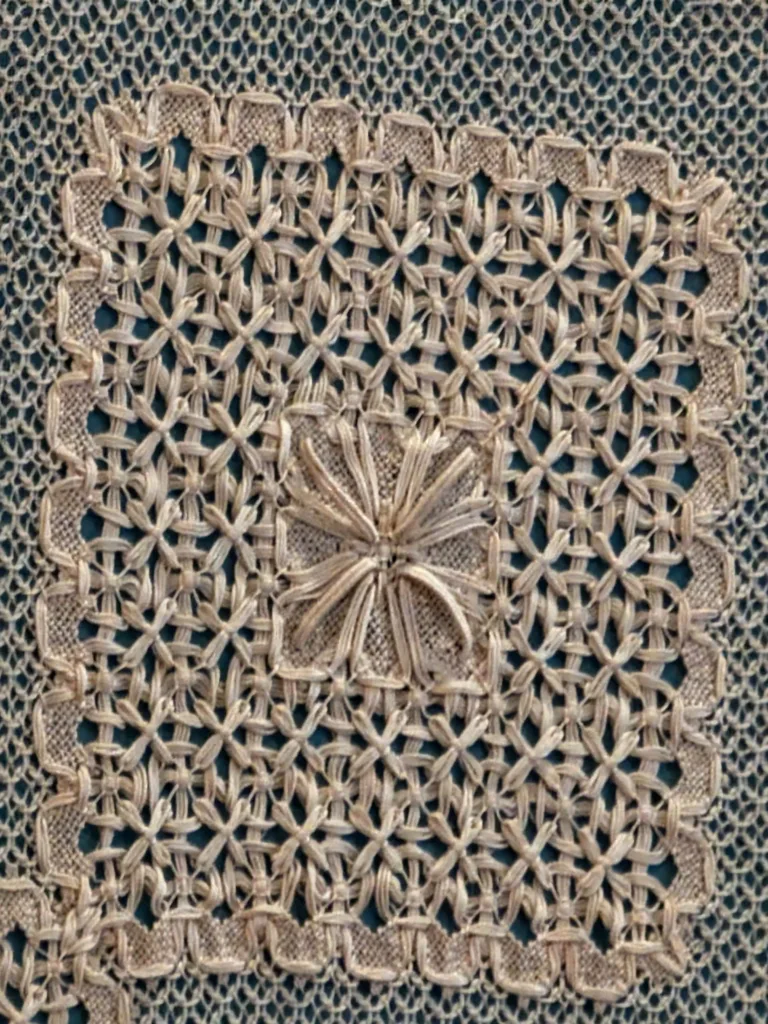
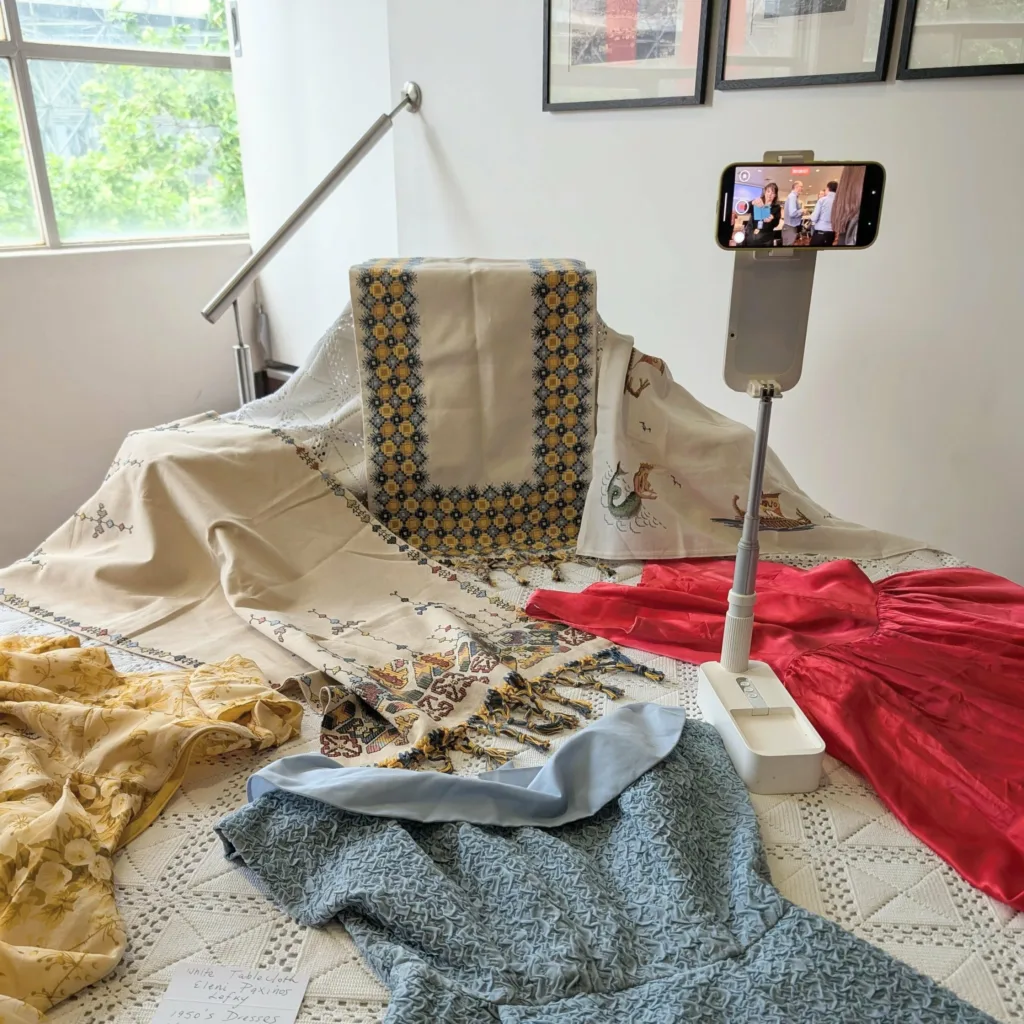
For Communications Manager Debbie Argyropoulos, the fibres held personal history. She recounted never having the chance to ask her mother about the intricate filet lace she created as a teenager, a curiosity that grew when she saw an iconic photograph of Nina Condelos (nee Paxinos) standing beside her work, taken circa 1953 before the devastating earthquake that forced her migration.
Years later, on a summer holiday in Ithaca, Debbie met Ourania, one of the few women still practicing the craft. “I could never have imagined the skill, patience and precision it requires,” Debbie said.
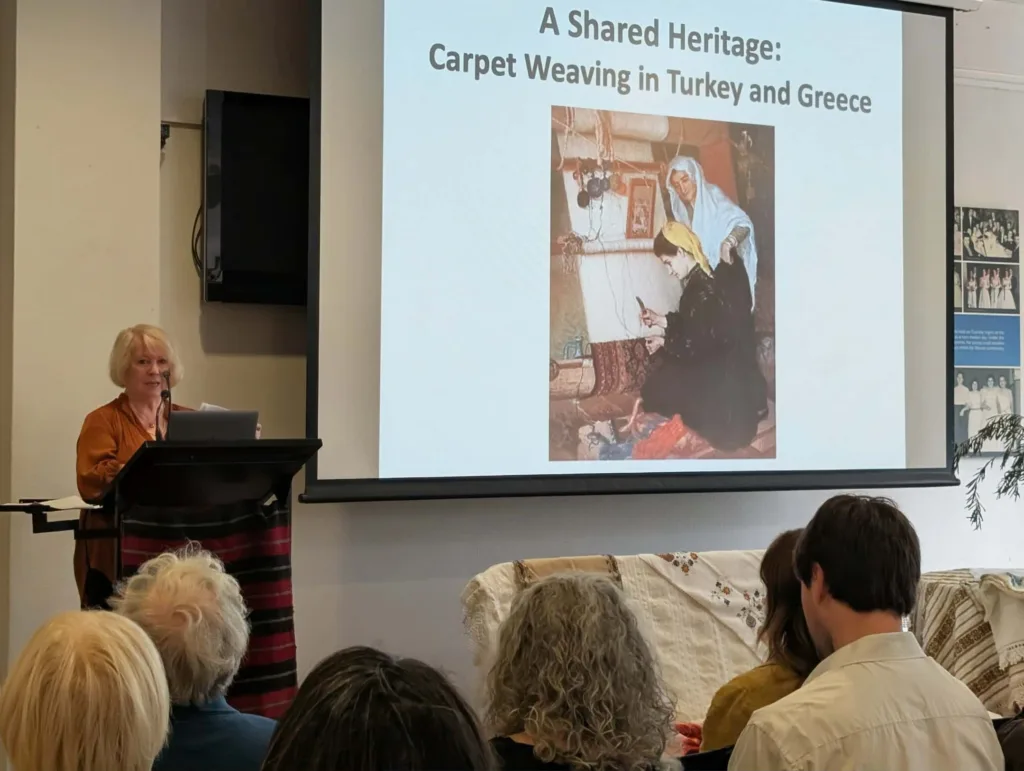
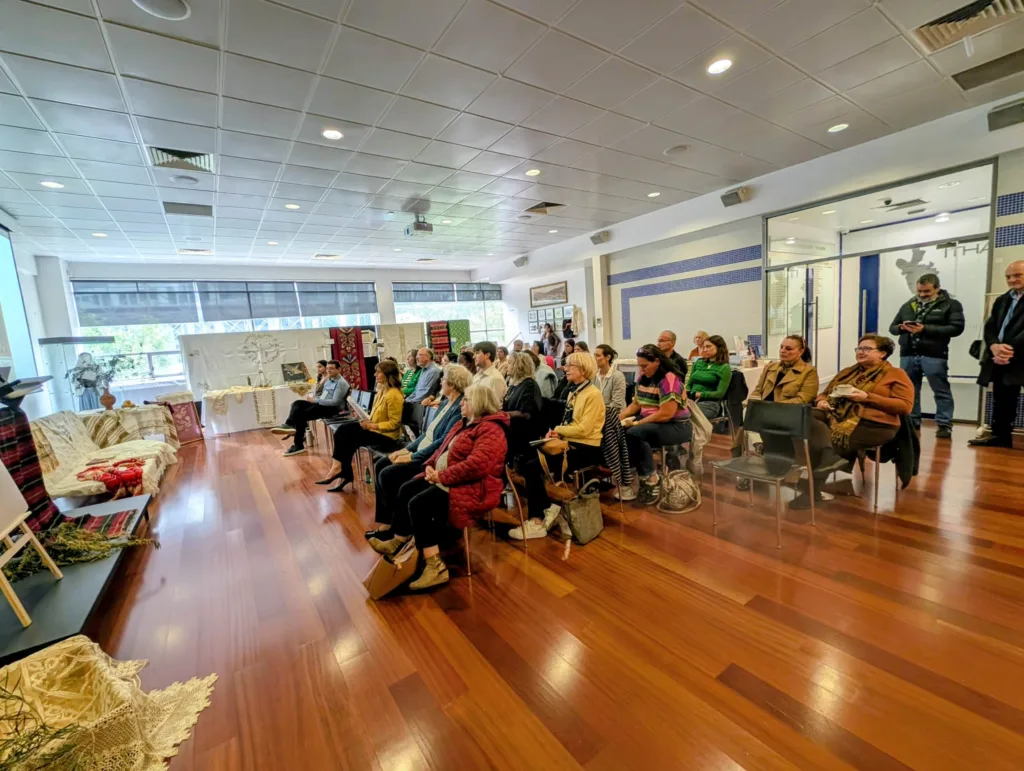
Maps of migration and identity
“Each textile has its own story to tell,” said MC Penelope Vakalopoulos, one of the younger women leading the fibre craft revival. To her, these pieces were more than decorative; they were “maps of migration, memory, survival and identity.”
Penelope invoked the symbolism of her namesake, Odyssey’s Penelope, the archetype of resilience.

“In our history, textiles weren’t just chores. They were how women shaped their destinies,” she stated. “Weaving was their voice, their power.”
For Ithacan women, spinning, dyeing, and weaving formed the backbone of daily life, sustaining households by creating dowries and clothing. Yet, as Penelope noted, much of this practical knowledge has slipped away, surviving mostly through the heirlooms left behind.
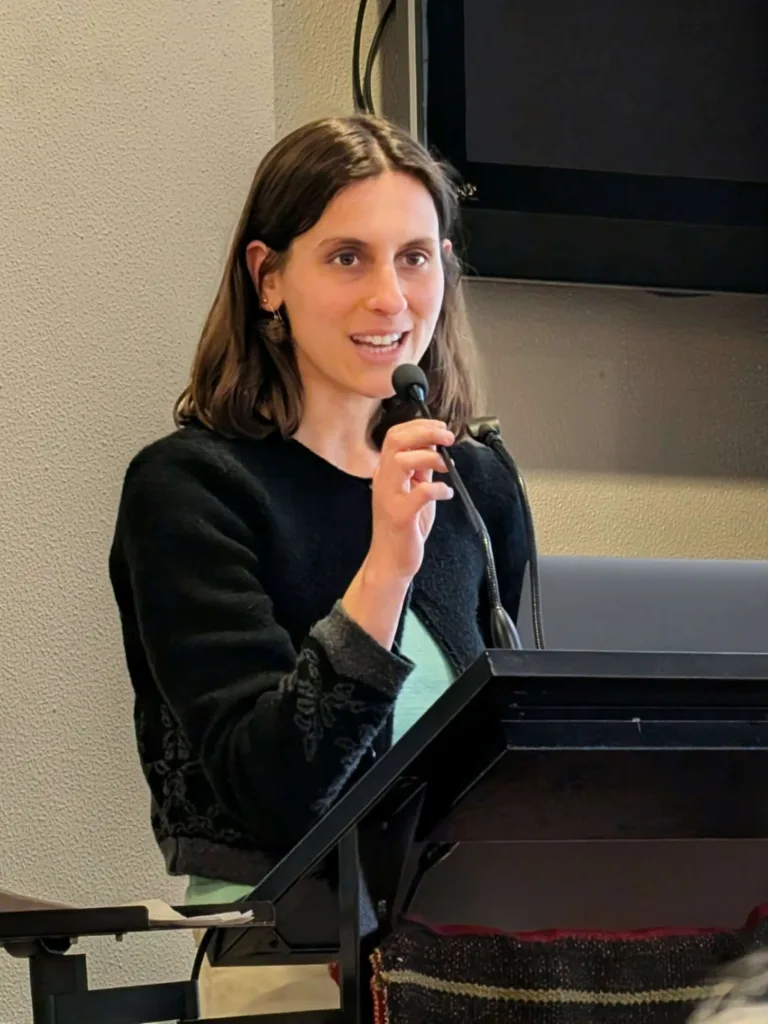
The renaissance of making
That loss is now sparking a revival.
“There’s a renaissance among young people,” Penelope noted. “We’re tired of living only online. We want to create again.”
Young craftswoman Christine Georgopoulos echoed this: “Fast fashion is soulless. These older pieces, they endure, they excite you.”

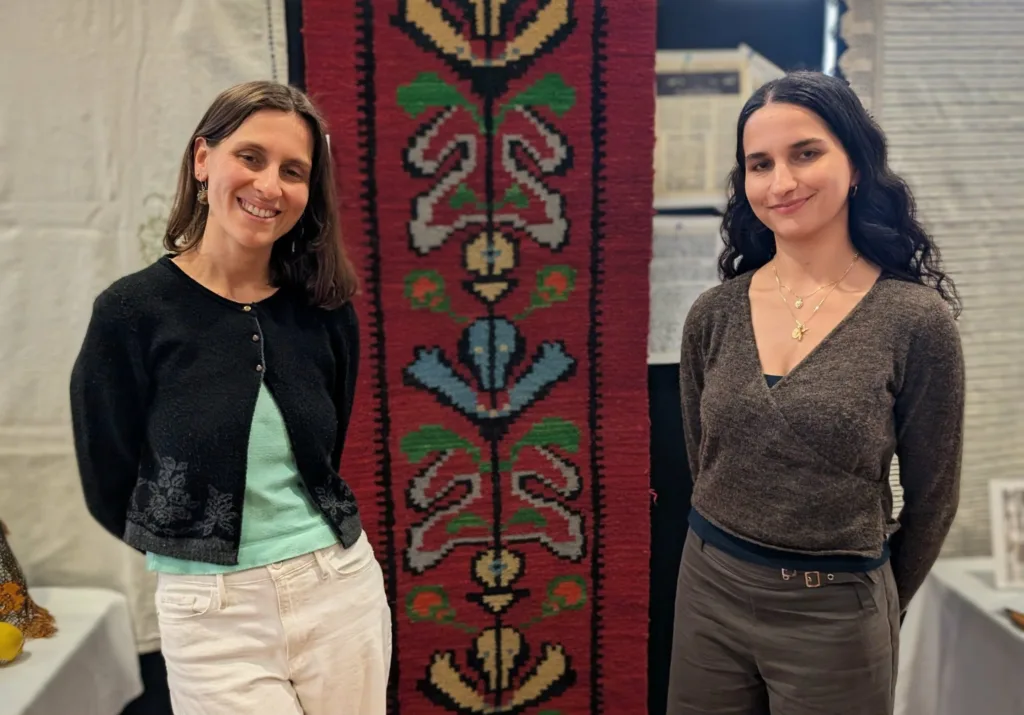
Christine designs contemporary garments while tracing her family’s textile lineage, while Penelope learned to weave on a loom taught to her by an elderly Ithacan woman. Their exhibition corner paired innovative new designs with century-old treasures, showing a clear dialogue between inheritance and modernity.
The community’s textile group, as President Peter Raftopoulos explained, now meets online, even welcoming a member from Amsterdam.
“We don’t need to sit in village kitchens anymore. We can keep this creativity going wherever we are,” he said, emphasising that the dowries on display carried the culture of the women who made them.


Shared heritage
Many of the displayed pieces journeyed with women fleeing war or seeking new beginnings in Australia, carrying both trauma and hope in their stitches.
Debbie highlighted a particularly unique item: “The ritso bedspread. Every Ithacan home has them. We’re convinced they’re unique to us.”
The event culminated in a sweeping lecture by best-selling author and textile historian Kathryn Gauci, whose historical novels are directly inspired by textiles. Gauci traced the intertwined histories of Greek and Anatolian textiles, an exchange shaped by migration, war, and artistry. She explored how refugee weavers transformed Greece’s carpet industry after 1922 and the evolution of Greek dress, highlighting the craftsmanship that shaped modern Greek identity.
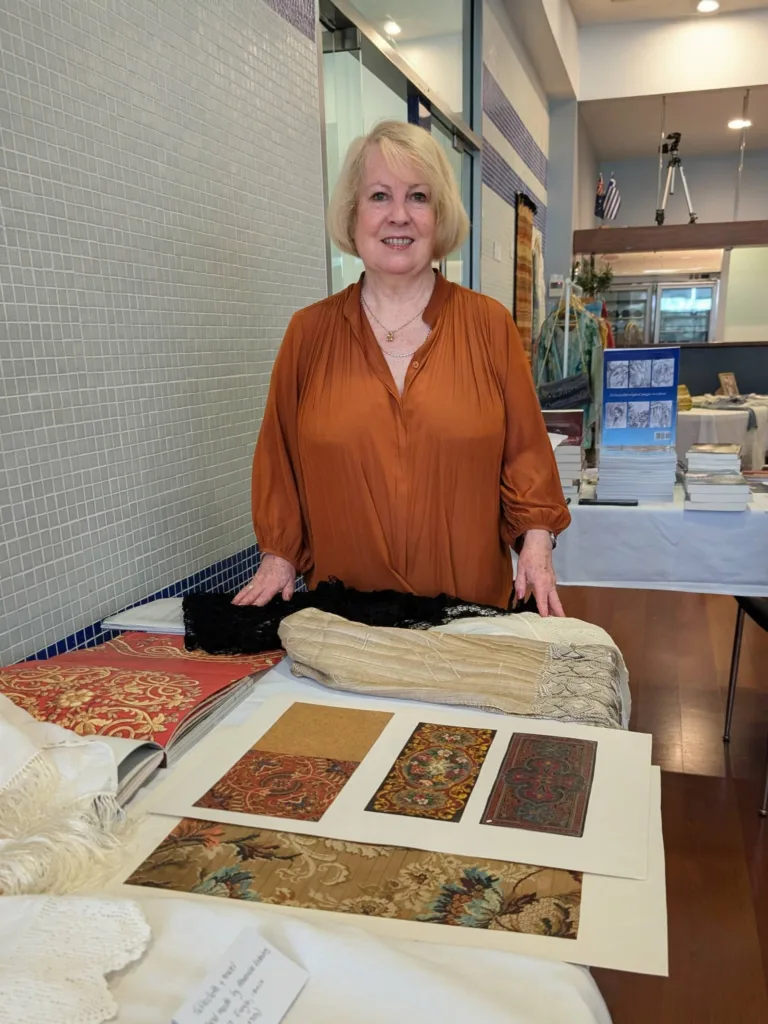
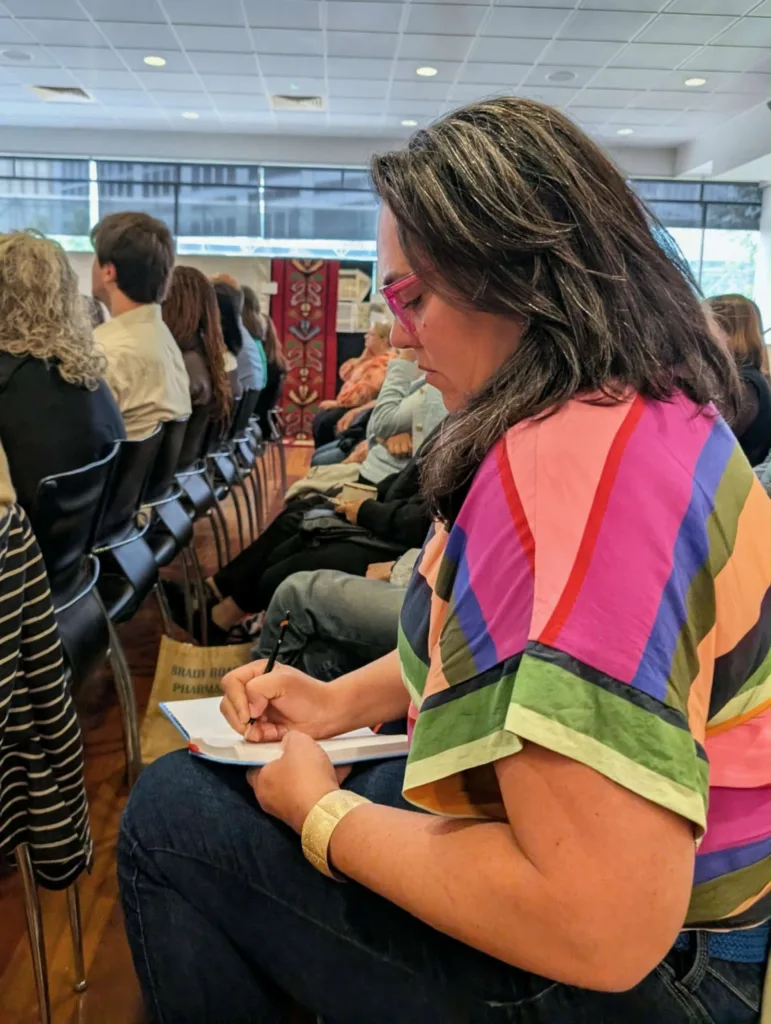
“Textiles were, and still are, a language,” she concluded. “A language of survival, beauty and cultural memory.”
As guests lingered, it was clear that Threads of Memory was an act of preservation and renewal. The past spoke through every fibre, but the future of Greek textile heritage was equally present, held in the hands of a new generation eager to continue the weave.
In Debbie’s words: “These pieces remind us who we are. And they ask us to keep the story going.”

